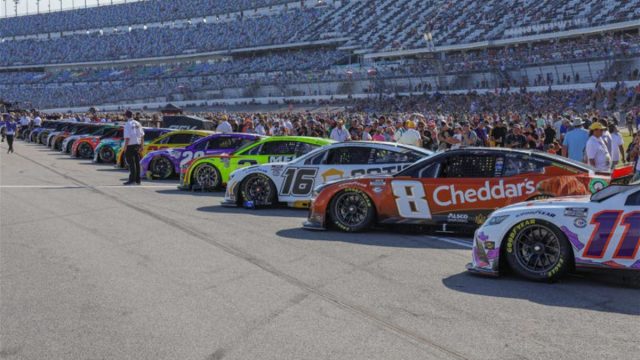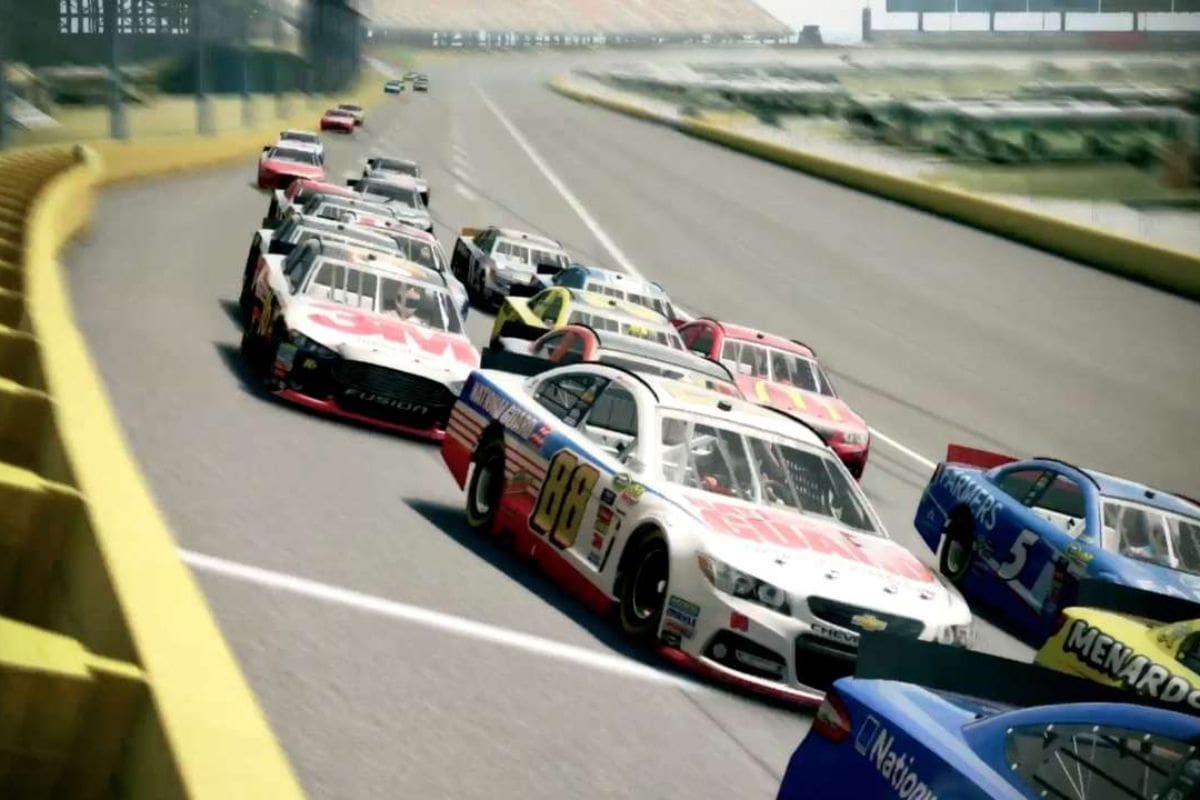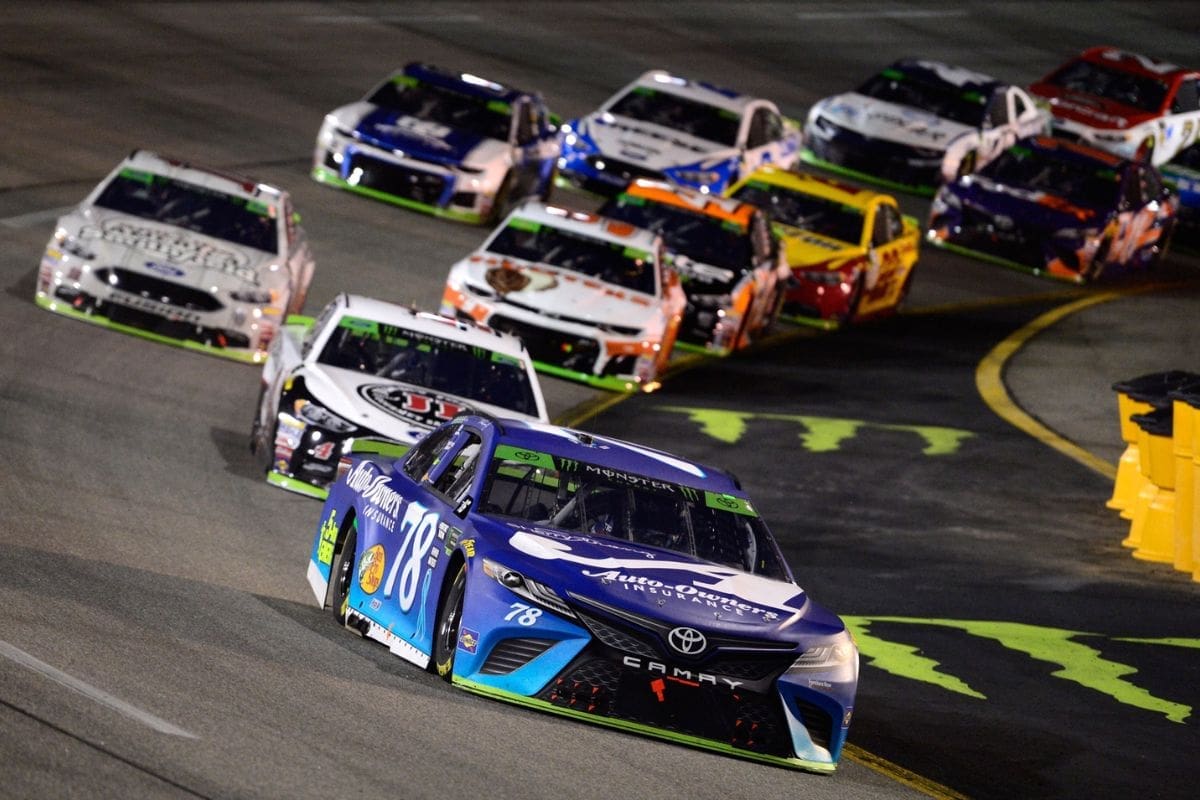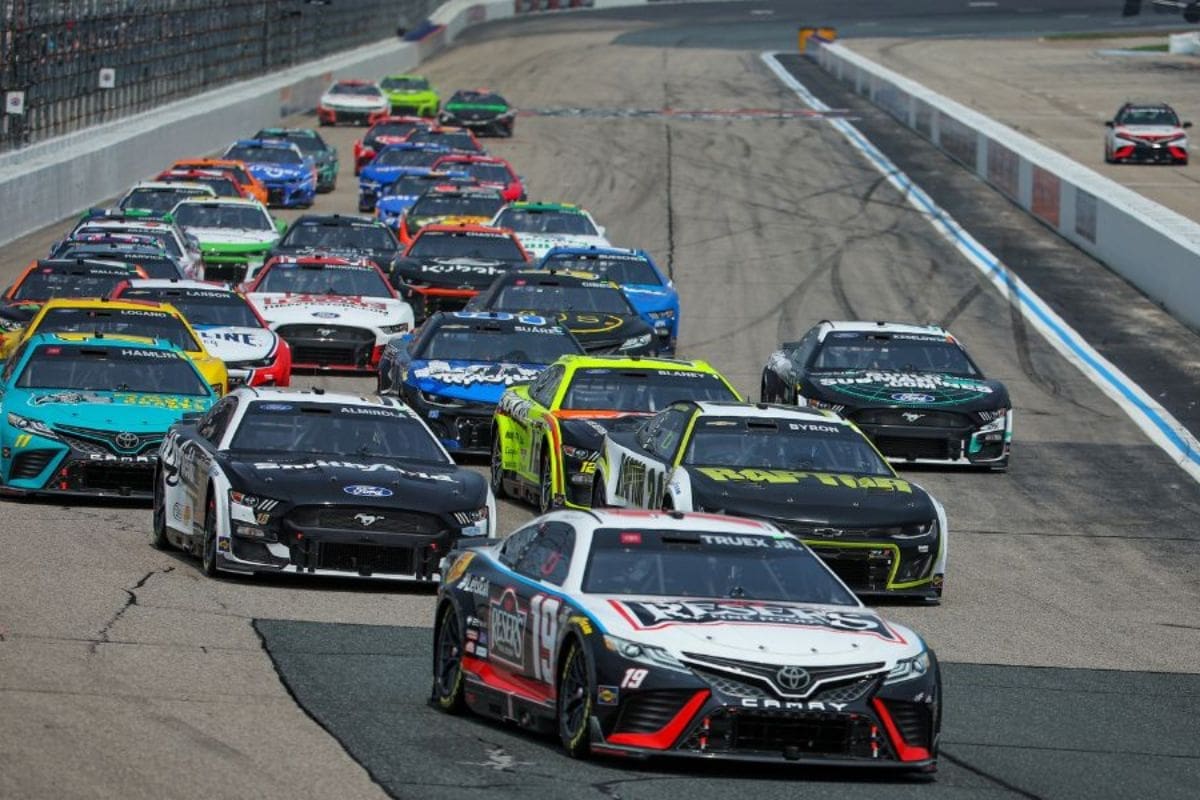NASCAR’s $7.7B TV Contract Flops: NASCAR’s recent $7.7 billion TV contract, initially hailed as a significant financial victory, is now under examination as fans voice concerns over rising subscription costs and perceived inadequate benefits. This discontent highlights a growing rift between NASCAR’s revenue aspirations and the expectations of its dedicated fan base. As subscription fees climb, the challenge for NASCAR lies in finding a balance that preserves fan engagement while capitalizing on media rights. This situation raises crucial questions about the long-term viability and strategic direction of the organization, prompting a closer examination of the underlying issues and potential resolutions.
Key Highlights
- Fans criticize the increased subscription fees for TV and streaming services post-deal.
- Race teams are discontent due to limited financial support from the media deal.
- Higher costs have led to reduced engagement and loyalty among fans.
- Michael Jordan criticized NASCAR’s revenue distribution, echoing fan concerns.
- Fans feel undervalued and express frustration over escalating costs on social media.
NASCAR’s Lucrative Media Rights Deal
In a landmark move to secure its financial future, NASCAR inked a seven-year, $7.7 billion media rights deal that promised to reshape the economics of the sport. This substantial agreement was seen as a defining moment in the sport’s financial landscape, with expectations of amplified revenue streams and improved broadcast quality. The deal was structured to provide NASCAR with a significant influx of capital, ostensibly allowing for investment in different facets of the sport, ranging from technological improvements to broader marketing initiatives.
The distribution of this newfound wealth, however, became a contentious issue. Race teams were quick to anticipate a proportionate share of the revenue, envisioning a scenario where the financial boon would trickle down to support their operations, including team enhancements and better compensation for drivers and crew members. Nonetheless, claims arose suggesting that NASCAR’s internal allocation policies were not as equitable as anticipated. Allegations surfaced pointing to NASCAR’s reluctance to disseminate a fair share of the lucrative deal to the teams, attributing this to organizational greed.
This arrangement, which some viewed as skewed, created an atmosphere of discontent among race teams. The expected benefits of the deal were overshadowed by the reality of limited financial relief for the operational costs and developmental aspirations of the teams. Consequently, the promise of reinvigorated team finances and improved competitive parity across the sport remained largely unfulfilled.
NASCAR’s Response and Strategy
NASCAR’s leadership, represented by President Steve Phelps, has articulated a strategic vision aimed at expanding its audience through an integrated media rights deal encompassing broadcast, cable, and streaming platforms. Phelps expressed enthusiasm about the 2025 media landscape, emphasizing the importance of meeting both current and potential race fans where they consume content.
NASCAR announces its new Media Rights deal for 2025 and beyond
Fox Sports, Amazon Prime, TNT and NBC Sports will be the broadcast partners for the NASCAR Cup Series. The CW will broadcast the Xfinity Series. Fox will continue to broadcast the Craftsman Truck Series pic.twitter.com/0eNJRw8gpk
— Steven Taranto (@STaranto92) November 29, 2023
“We are super excited about what 2025 is going to bring to us… which is a combination of obviously broadcast, cable, and streaming. We want to meet race fans where they are or potential race fans where they are. We think this group does exactly that for us, so we couldn’t be happier to have them on board.” – Phelps
The $7.7 billion deal, which integrates traditional broadcast with digital streaming services, is designed to improve accessibility and engagement. NASCAR’s approach reflects a broader trend in sports media, aiming to diversify viewership demographics and capture a younger, tech-savvy audience. Phelps highlighted the organization’s commitment to leveraging this multi-platform strategy to provide a more inclusive and expansive viewing experience.
Despite the strategic foresight, early reactions from the fanbase indicate a gap between NASCAR’s intentions and fan expectations. Traditional fans, who are accustomed to legacy broadcast methods, have expressed concerns about the potential fragmentation of content and accessibility issues. This highlights the challenge in balancing innovation with the preservation of existing viewer loyalty.
Outlook
Amid rising concerns over the cost and accessibility of viewing NASCAR races, the outlook for the $7.7 billion media deal hinges on its ability to reconcile fan expectations with modernized content delivery methods.
The current sentiment among the racing community indicates a significant discontent, primarily driven by increased subscription costs and fragmented access to race broadcasts. This discontent poses a considerable challenge to the sustainability of the contract.
To navigate these turbulent waters, NASCAR and its broadcasting partners must innovate their approach. Central to their strategy should be the improvement of digital platforms, ensuring seamless and affordable access to live races. By leveraging technologies such as streaming services and mobile applications, they can cater to a broader demographic, including the younger, tech-savvy audience who are less inclined towards traditional cable subscriptions.
Additionally, offering tiered pricing models could alleviate the financial burden on fans while still ensuring revenue generation.
Another critical factor in the outlook of the media deal is fan engagement. NASCAR must proactively seek feedback and incorporate fan suggestions to improve the overall viewing experience. Interactive elements, such as real-time race analytics and virtual fan meet-ups, could enhance engagement and foster a more loyal fan base.
Additionally, strategic partnerships with other digital content providers and social media platforms could amplify NASCAR’s reach and visibility. Collaborations with these entities can create a more integrated and immersive experience, potentially attracting new fans.
Impact on Fans
The significant increase in the cost of the media rights deal has resulted in higher subscription fees for TV and streaming services, placing an extra financial burden on NASCAR fans. Previously, the combined annual payout from FOX and NBC was $820 million, but the new $7.7 billion deal has led to a substantial hike in costs associated with accessing NASCAR content. This escalation has not only affected how fans consume their favorite sport but also their general engagement and loyalty.
The financial implications are multifaceted. On one hand, the increased costs for TV and streaming services mean that fans are required to allocate more of their disposable income to maintain access to NASCAR events. For many, this translates to difficult choices between subscribing to multiple platforms or potentially missing out on key races.
On the other hand, the heightened expense could lead to a decrease in viewership, as some fans may opt out entirely due to the prohibitive costs. Moreover, the domino effect of this financial burden extends beyond individual fans.
The increased subscription fees may also impact the broader NASCAR community, including local fan clubs and grassroots initiatives that rely on widespread engagement and participation. As access becomes more exclusive, the sense of community and inclusivity that has long been a hallmark of NASCAR could be hampered.
Fan Reactions and Concerns
Frequently vocal and increasingly discontent, NASCAR fans have expressed significant frustration and concern over the escalating costs associated with accessing their beloved sport. The $7.7 billion TV contract, intended to bolster NASCAR’s financial stability, has inadvertently alienated a core segment of its audience. Many fans feel that the increased costs of viewing packages and subscriptions are pricing them out of the experience.
A recurrent theme among fan complaints is the perceived disconnect between NASCAR executives and the fan base. The expensive media rights deal is seen as a glaring example of this disconnect. Fans argue that the financial burden has shifted onto them without any tangible improvement in the viewing experience. The sentiment is that NASCAR prioritized revenue over fan engagement and accessibility.
Moreover, fans have taken to social media and forums to voice their displeasure, highlighting not just the cost, but also the quality of the broadcasts. There is widespread criticism that despite the higher prices, broadcasts suffer from too many commercial breaks and lack in-depth coverage of the races. This has led to a growing distrust and a feeling of being undervalued among the community.
“smh nobody is going to pay that.”
“If our ownership in NASCAR is losing money and NASCAR’s the only one making money, that’s not a good partnership.”
“$7.7B Media deal? Maybe they can help me pay these different cable/TV bills I have so I can continue to watch the ONLY sport I love. They’re killing me!” – fans reaction
The financial strain extends beyond viewers to the teams themselves. 23XI Racing’s Co-owner Michael Jordan, a prominent team owner, publicly criticized NASCAR for its revenue distribution practices.
‘”f our ownership in NASCAR is losing money and NASCAR’s the only one making money, that’s not a good partnership.’”- jordan
News in Brief: NASCAR’s $7.7B TV Contract Flops
The $7.7 billion TV contract has highlighted significant discontent among NASCAR fans, largely due to rising subscription fees and perceived limited benefits. This dissatisfaction emphasizes a critical challenge for NASCAR: aligning its financial strategies with the needs and expectations of both fans and race teams.
Addressing these concerns is crucial for maintaining fan engagement and loyalty, thereby ensuring the long-term sustainability and success of the media rights deal and the organization as a whole.
ALSO READ: FOX Ends NASCAR Race Hub, Fans Claim ‘NASCAR Is Dying’




When Nascar signed this deal,they sure weren’t thinking of the fans. Who can afford to pay more?not me. Maybe they did this so Nascar fails and all racing comes to an end.
Greed once again beats down the poor, trying to reach the fans where they are (horse shit) trying reach new heights in money headlines yes, I have been using all disposable income to watch and attend races, more TV money means less of both, but I’m old how long can I last